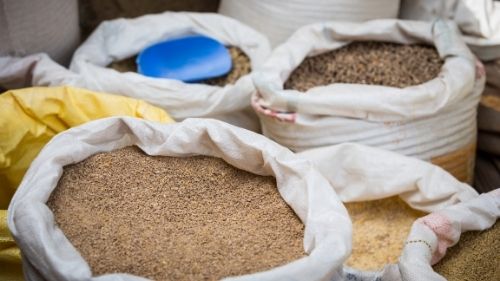- Posted by Anitox
Impacts of Inadequate Moisture Management in Feed Milling
Managing moisture well in feed requires a combined effort from nutritionists, mill managers and the product quality team. Done well, it optimizes energy efficiency, throughput, pellet quality and the performance of livestock.
Get Your Free Guide to Pellet Quality
Livestock Performance
Pellets are often chosen because they offer homogeneity and nutritional uniformity. Some species prefer pellets over other feed forms such as crumble or meals. They can be easier to eat, more digestible and improve weight gain as well as feed conversation rates.
But shrink, pellet durability and mold – all affected by moisture levels - can negativity affect the quality of pellets, and therefore the nutritional and productivity benefits of feeding them.
Broilers, for example, prefer intact pellets and will scratch out fines from the feeder, leading to feed waste. Larger birds often crowd feeders and leave only the fines for smaller birds. Those fines aren’t nutritionally balanced, leading to poor flock uniformity and reduced profits.
Feed Mill Efficiency
Shrink
Too often pellets going to farm have moisture levels below 11%, yet ration specifications set clear optimum moisture content contents for poultry diets, normally between 12% and 14%. Mills that reduce the effect of shrink, through moisture management, can output up to 3% more feed from the same volume of raw materials.
Pellet Durability Index
Moisture impacts starch gelatinisation, the key to PDI. A PDI which is too high, wastes energy and sacrifices throughput. Pellets with too low a PDI, are more likely to break down during the pelleting process, during transport and in storage. In the mill, resulting fines slow down mill production. Excessive fines absorb moisture and stimulate mold growth.
For a poultry diet, Anitox recommends aiming for 90+% PDI on a 3-4mm pellet, although it recognises that in the U.S and Latin American markets, PDI above 80% is considered acceptable for broilers.
Feed Quality
Mold can grow in feed where moisture isn’t adequately managed. Mold growth often occurs where:
- ingredients are overly moist
- where there are excessive fines to absorb moisture and stimulate mold growth
- in feed that hasn’t been properly cooled
- when condensation in bagged feeds enable the development of populations.
Any feed that is stored, rather than used immediately is at risk of mold growth. As well as the increased production costs, associated wastage, and reputational damage, if contaminated feed is fed to animals, the result is often lower animal performance, and health issues associated with the contaminants such as mycotoxins.


